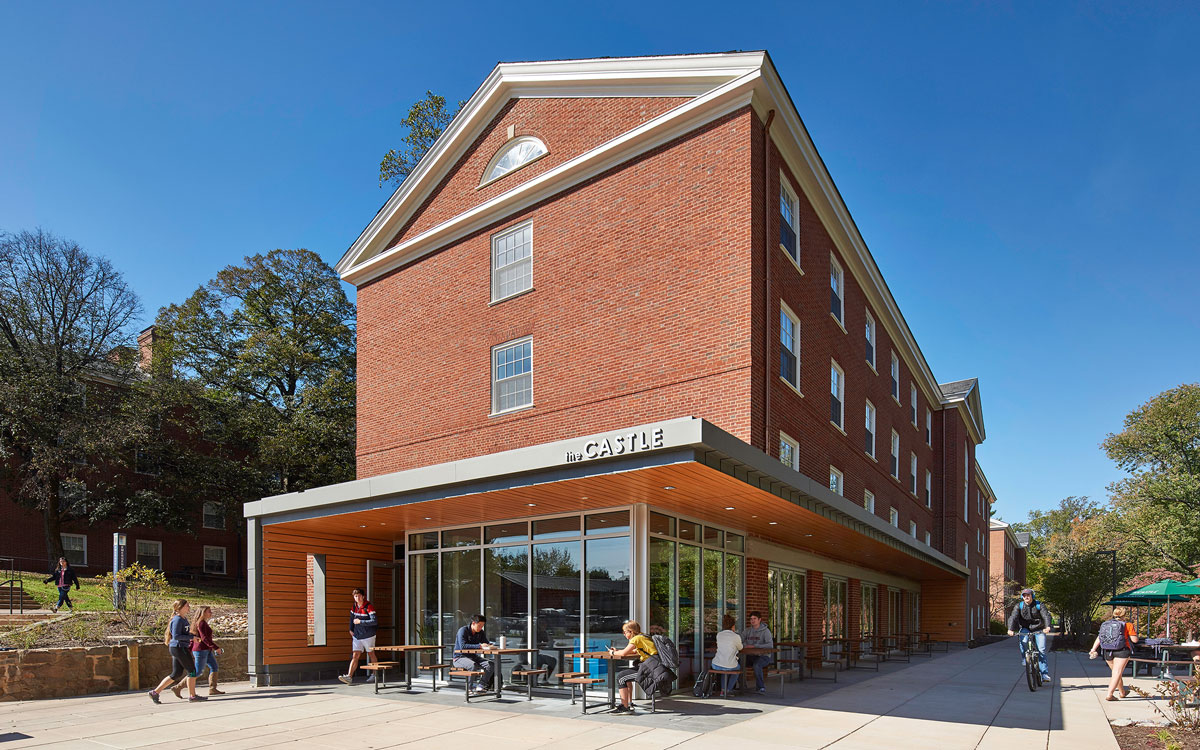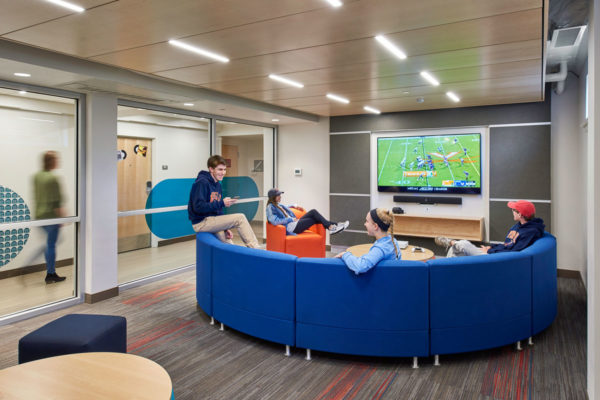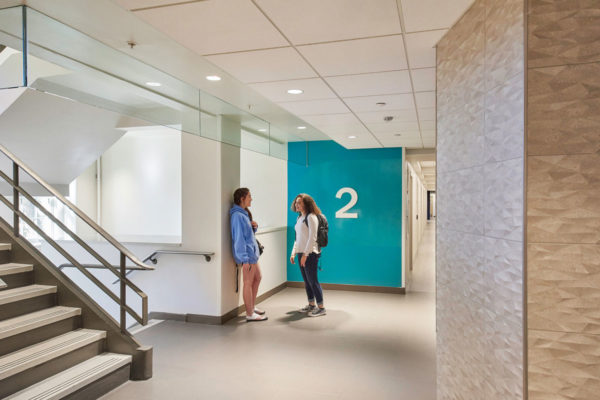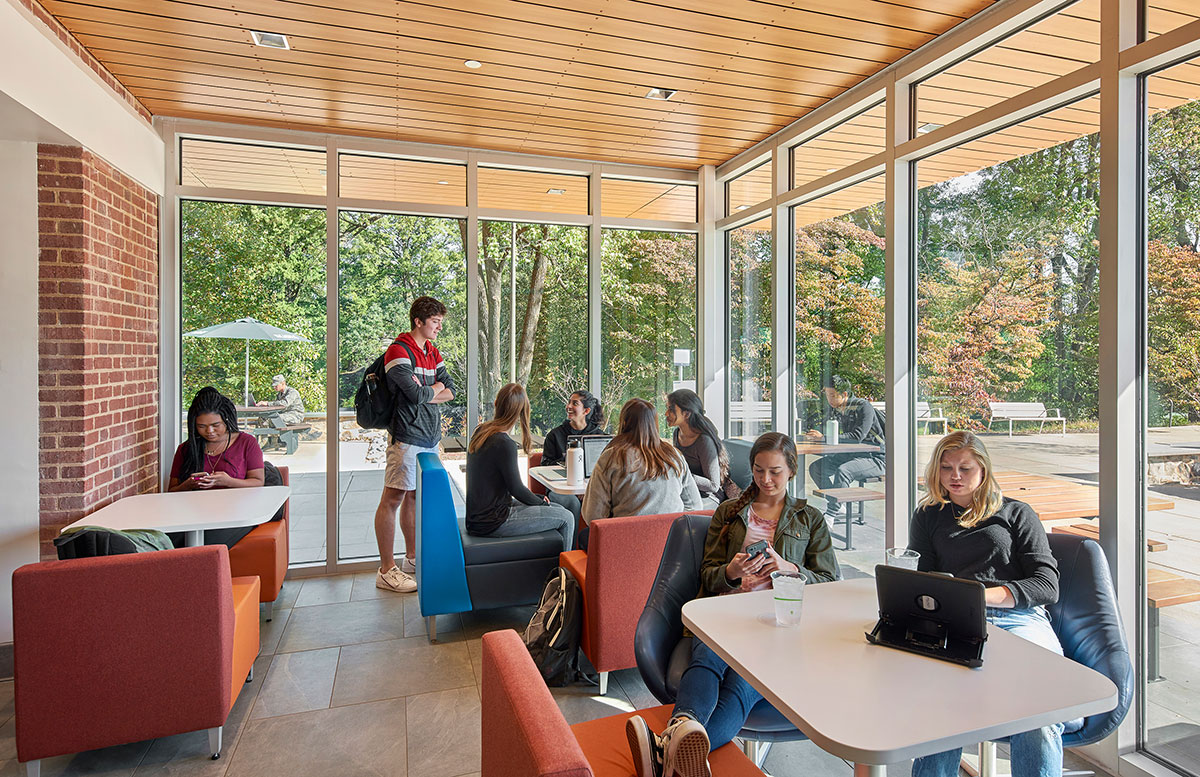Two UVA Residence Halls Are USGBC Virginia 2020 Community Leader Award Co-Winners
 USGBC Virginia announced the winners of their 2020 Community Leader Awards program celebrating outstanding people and projects leading the way to a greener future for all in Virginia. An online ceremony held June 25 honored the recipients, who were recognized for excellence in high-performance building design, environmental stewardship, community impact, and volunteerism.
USGBC Virginia announced the winners of their 2020 Community Leader Awards program celebrating outstanding people and projects leading the way to a greener future for all in Virginia. An online ceremony held June 25 honored the recipients, who were recognized for excellence in high-performance building design, environmental stewardship, community impact, and volunteerism.
The awards jury had an unusual split decision for the category that both Clark Nexsen finalist projects were submitted for. Unable to decide between the two, they decided to make both Bonnycastle Hall and Kent/Dabney Hall co-winners in the “Innovative Design, New Construction – Higher Education” category.
The University of Virginia partnered with Clark Nexsen as the architect and engineer for phased comprehensive renovations to the six historic McCormick Road Residence Houses built in the 1950s. The neo-colonial style brick exterior buildings in the complex had been well-maintained, but the facilities were not air-conditioned, lacked sprinklers, adequate insulation, and provided heat through steam radiators. The building systems were outdated and inefficient, causing high energy usage.
Both Bonnycastle and Kent/Dabney are 4-story residence halls were completed in August 2018 for a new class of first year students to move in for the upcoming school year. Kent/Dabney achieved LEED Gold certification with the U.S. Green Building Council, while Bonnycastle earned LEED Silver.


Clark Nexsen’s Student Life team created a reimagined housing complex with new, energy efficient systems. The comprehensive renovations also created a modern aesthetic that is attractive to students and provides a significant increase in interior natural lighting as well as the addition of a variety of social spaces. Retaining 97% of the existing structure and envelope lends credence to the saying that the most sustainable building is the one you don’t build.
In Kent/Dabney, the central stair was opened up to be a more inviting vertical pathway, with graphics, informational monitors, and wayfinding in a central location. The actual building is performing better than the model, with the 2019 actual energy consumption coming in at 58% savings compared to the benchmark.
 Bonnycastle included a major overhaul of The Castle, a popular UVA hangout. The Castle and its surrounding outdoor plaza are now a vibrant hub with sustainable menu choices that reflect the preferences of today’s students. Bonnycastle received 11 out of a maximum of 19 “Optimize Energy Performance” points which is impressive for a building with intensive food service. Like Kent/Dabney, Bonnycastle is performing better than the model — a pleasant surprise for the UVA project team with the 2019 actual energy consumption coming in at 42% savings compared to benchmark.
Bonnycastle included a major overhaul of The Castle, a popular UVA hangout. The Castle and its surrounding outdoor plaza are now a vibrant hub with sustainable menu choices that reflect the preferences of today’s students. Bonnycastle received 11 out of a maximum of 19 “Optimize Energy Performance” points which is impressive for a building with intensive food service. Like Kent/Dabney, Bonnycastle is performing better than the model — a pleasant surprise for the UVA project team with the 2019 actual energy consumption coming in at 42% savings compared to benchmark.
Both facilities feature a dedicated outdoor air system (DOAS) with total energy recovery wheels that is critical to the high performance of the HVAC system. Accommodating this large equipment in each existing shell was done by locating the DOAS unit in the attic. In the renovated facilities, nearly all occupied spaces now have exterior views, and potable water use was reduced by 44%. The indoor air quality was improved with a DOAS that provides fresh filtered air to each room.
Project Team
Owner: University of Virginia
Architecture & Engineering: Clark Nexsen (architect, civil, structural, MEP, fire protection, interior design, lighting)
Contractor: Barton Malow
Foodservice Consultant (Bonnycastle): Tipton Associates
See all the winners in the official press release.
About USGBC Virginia
USGBC Virginia's mission is to advocate and educate for sustainable buildings and communities across the commonwealth. With local branches in Richmond, Hampton Roads, Charlottesville, and Roanoke, their members are a diverse group including architects, engineers, contractors, manufacturers, and building owners and occupants. Since 2005, USGBC Virginia’s green building leaders have pursued a vision of a community where efficient, healthy buildings save resources and costs, and are better places to live, learn, work, and play.